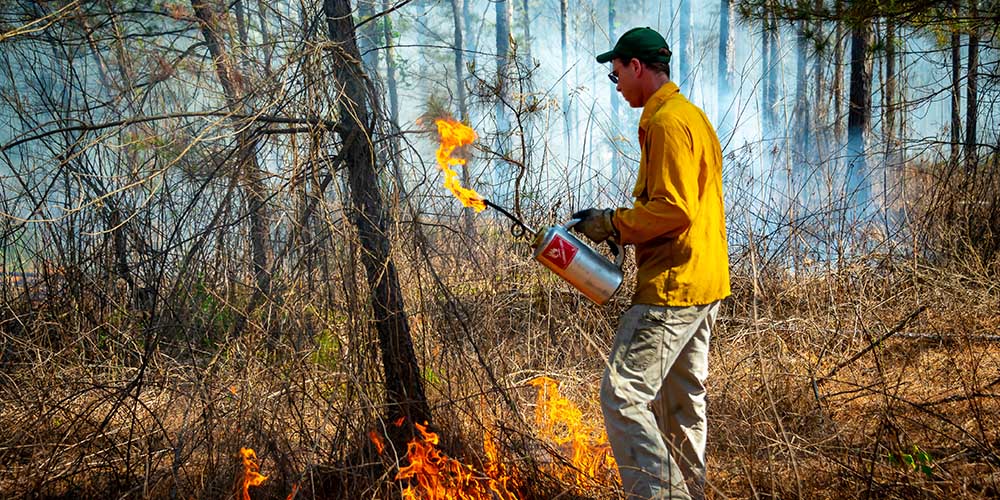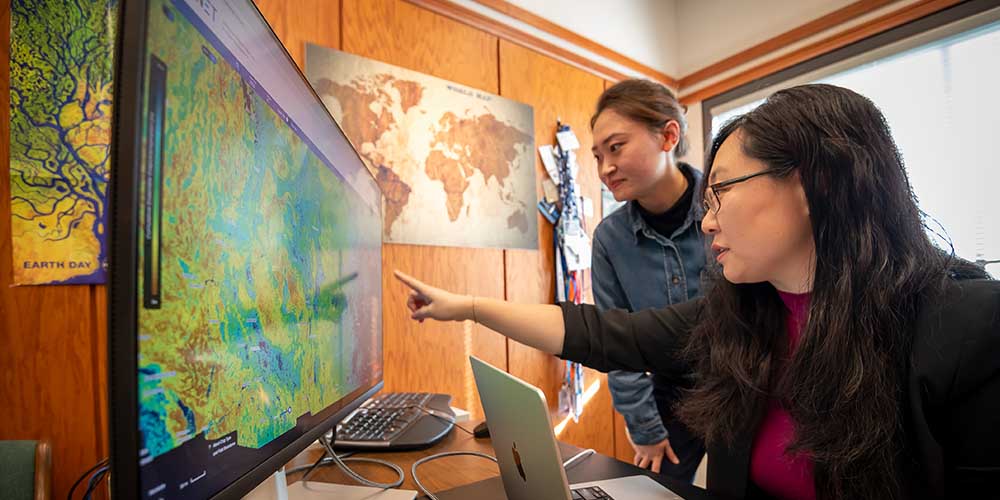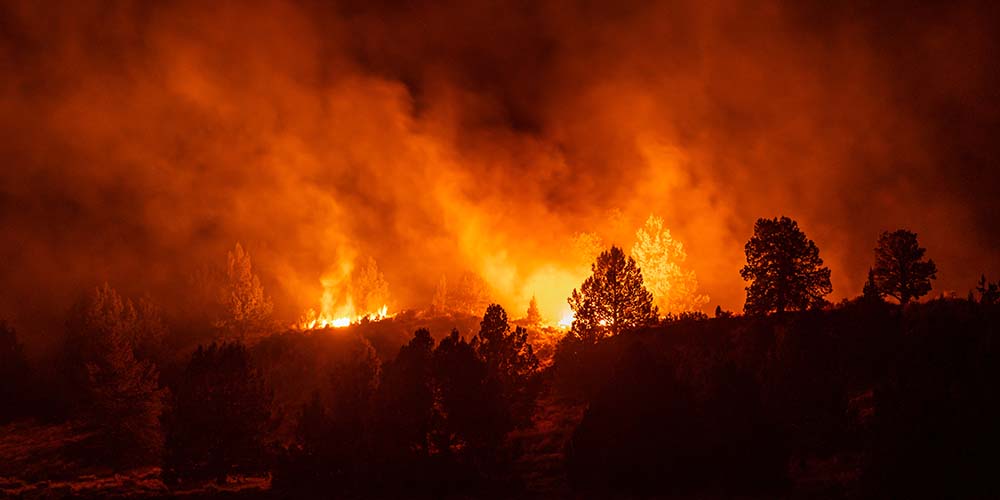Forest Measurements and Spatial Technology Stories

Hardwoods Ablaze
FWRC researchers studied prescribed fires and its impact on different forests, fuel loads, and ecosystems. Their research used fire as a natural disturbance tool to manage and alter forests and ecosystems. During their prescribed fires, they learned there wasn’t a large impact on fuel loads when they burned in the East, and therefore concluded that fuel reduction is not a considerably beneficial reason to burn. They also focused on burning hardwood forests, which resulted in understanding that oak forests in the uplands depend on fire to clear out maples, winged elms, and birch so oaks can compete for growth. Researchers concluded that it is cheaper and easier to burn than to harvest across large tracts of land, in terms of oak-dominated forests.
The scientists also found that prescribed fire is good for the ecosystem because it manages composition from unwanted species, helps prepare the seed bed, and gets rid of pests and pathogens for the forest floor.
2018

Big Picture
Dr. Yun Yang, an assistant professor at Mississippi State's Forest and Wildlife Research Center (FWRC), is using satellite technology from NASA's Landsat program to address water resource management challenges in the Mississippi Delta. As part of the NASA Acres project, Yang is studying crop water usage and evapotranspiration to help improve groundwater sustainability in this agriculturally important region. The project, which involves over 30 scientists, aims to enhance agricultural strategies and resource efficiency. Unlike commercial enterprises, NASA's commitment to open science ensures that models developed in this project will be publicly available to benefit society. Yang's work was published in prestigious journals and presented globally.
2023

FWRC Scientists Study the Effects of Natural Disturbances on Forest Ecosystems
Wildfires are part of nature's method of bringing balance to ecosystems. However, fire suppression practices combined with expanded human settlement into fire prone territories over the last century have disrupted that balance and exacerbated the damage done by fire. Researchers in the Department of Forestry have studied how evapotranspiration, or water usage by vegetation, is an indicator of an ecosystem's overall health. Working with scientists from the University of California, the team analyzed satellite data from 1985 to 2017 and found that wildfires increased the percentages of evapotranspiration over a 15-year period. They also found that taking forest management actions such as thinning or controlled burns would result in a reduction in evapotranspiration, mitigating the impact of continued drought and future wildfires.